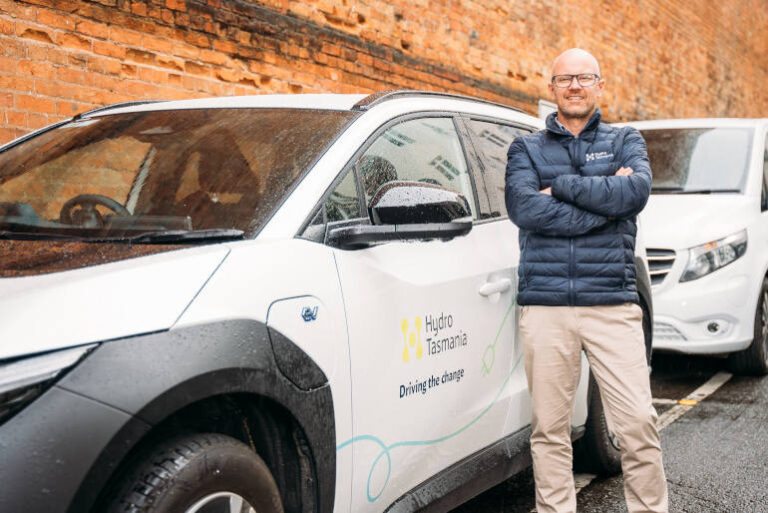I sat down to have a chat with Nick Stowe, Fleet Lead at Hydro Tasmania about the business’s progress in the transition of their fleet to low emissions vehicles. Having worked with the team in the early days of transition, I was curious to see what had been working and what had changed in their approach.
As a Government Business Enterprise, wholly owned by the Tasmanian State, Hydro Tasmania has been proudly producing renewable energy since 1916, when the first hydroelectric station was opened in Waddamana.
Hydro Tasmania is already one of the lowest carbon emitters in the energy sector and last year they announced an ambitious plan to reduce emissions further. “Towards Net Zero is our plan to achieve net zero reportable scope 1 and 2 emissions from 1 June 2025,” says Nick. “Electrifying our vehicle fleet is an important pillar of that program.”
With goals to transition to electric for 130 passenger vehicles by 2030, Nick and the fleet team have been working on three fronts since 2022 – finding vehicles that are fit for purpose, installing charging infrastructure, and helping staff adapt to electric fleet pool vehicles.
Hydro Tasmania currently has 20 fully electric vehicles, including 4 vans, with a focus on SUV-style vehicles including models such as Volvo XC40, Tesla Model Y, Peugeot e-Partner, Mercedes-Benz e-vito, Hyundai IONIQ 5 and Subaru Solterra.
“We are eagerly awaiting the release of the Volkswagen ID.4/Buzz models, as well as the Kia EV5 for its excellent range, cabin size and ground clearance,” says Nick.
“This financial year offers a new way forward with regular newcomers on the market, competitive pricing between original equipment manufacturers, and more practical fleet models being released.”
“Our primary challenge is range,” says Nick. “Many of our locations are far apart and we need to provide charging infrastructure to ensure vehicles can reach the location while also having decent clearance or four-wheel drive capabilities. The majority of our current fleet are utility vehicles and we don’t have access to electric utes yet, so we will be watching to see when hybrid or electric utes become available”.
Hydro Tasmania currently has 13 DC chargers across their sites, with an infrastructure program to expand this network in the current financial year. Many of Hydro Tasmania’s sites have unique challenges for charging infrastructure, such as proximity to switching yards, facilities located deep underground and vicinity to pristine natural environments. These factors have led to a conservative approach when placing charging stations, and closely following developments around fire and safety for EVs.
The current chargers have been chosen and placed to take advantage of spare electrical capacity in the current systems, but the team is looking at what electrical upgrades might be necessary to expand charging as the electric fleet grows.
When asked what advice he would give to other fleet managers, Nick says: “There is no right or wrong way to begin a transition, everyone knows their business best and what will work depends on an organisation’s operations and locations. Carefully planned change management and the introduction of suitable, fit-for-purpose vehicles is key to driver adoption and engagement.
“Future proofing is also important – don’t just plan for the next 1-2 years, anticipate future requirements and factor in upgrades or other works early to prepare for large scale EV and charger utilisation.”






